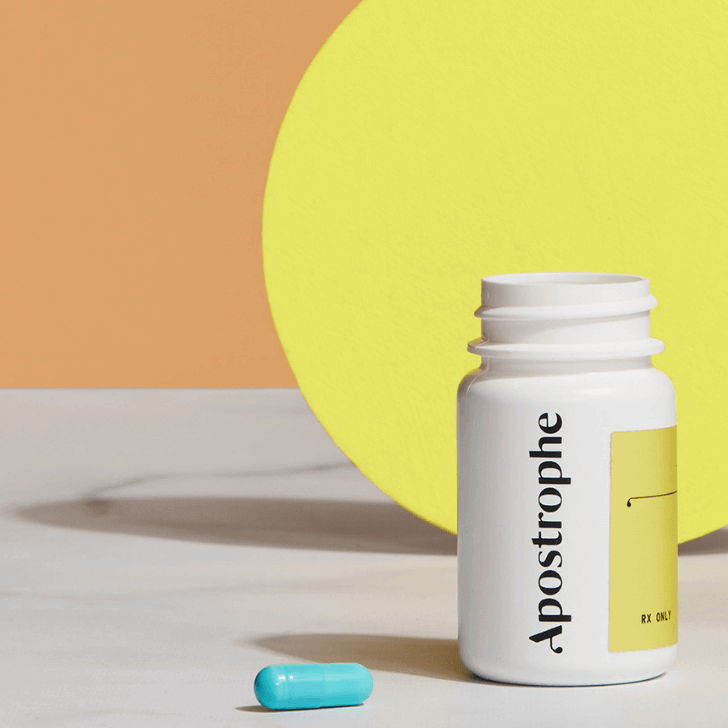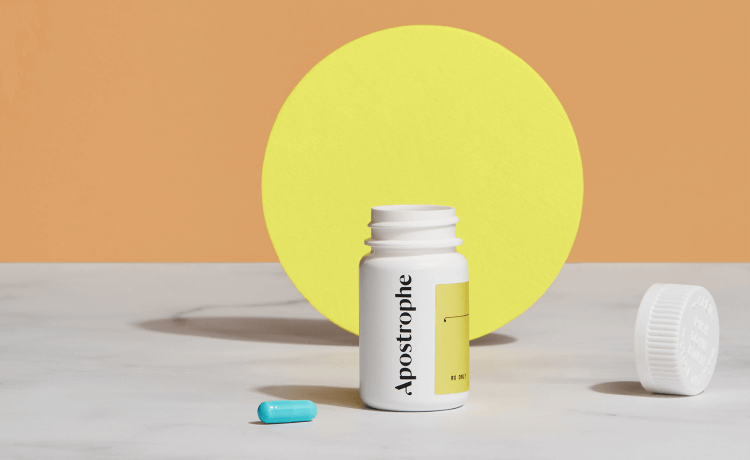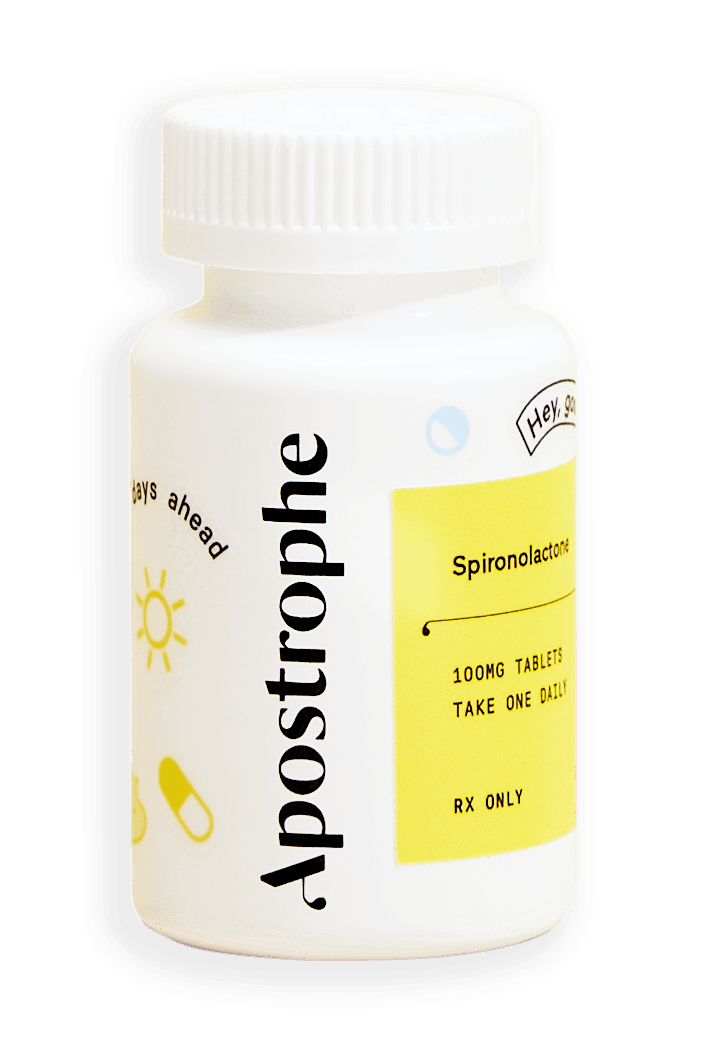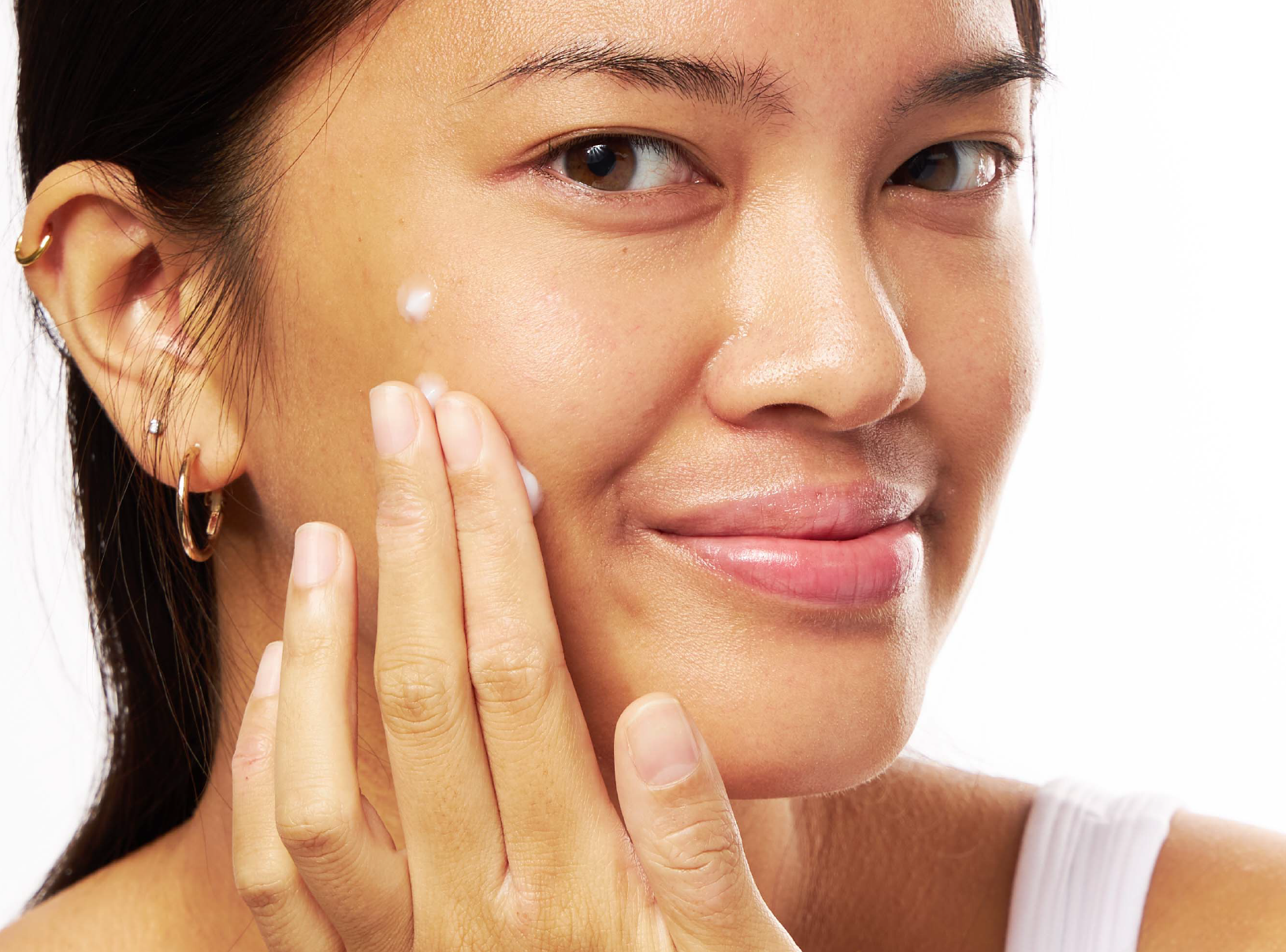Apostrophe Treatments
The Science Behind Spironolactone And How It Works


SHARE
Apostrophe Treatments
The Science Behind Spironolactone And How It Works
Medically reviewed by Aimee Paik, MD
Written by Apostrophe Team
Last updated 8/1/2024
When you have acne, your friends have advice. If it feels like you’ve tried every face wash, apricot scrub, or dairy-free diet your friends feel compelled to recommend and nothing seems to be able to stand up to your unrelenting army of zits, your doctor may offer some heavier artillery in the form of oral medications. Nestled somewhere between antibiotics and Accutane is a pill called spironolactone. Originally used to treat high blood pressure, more and more doctors have been prescribing spironolactone to treat hormonal acne with great success. But how and why does this drug work?
Hormones… they happen to the best of us
To understand why spironolactone is so effective, you first need to understand acne. This is easier said than done, considering that doctors themselves aren’t sure exactly why some people live zit-free lives while others don’t. Science does know that pimples happen when oil glands in the skin overproduce sebum and trap dirt and bacteria in the pores. Researchers believe that testosterone and other androgens can trigger oil glands to overproduce leading to the clogged pores we all know and love.
But if testosterone is a trigger, why do people of all genders struggle with acne? Although we often think of testosterone as the “male” hormone, all bodies produce it to varying degrees. It’s also important to note that estrogen and testosterone exist in feedback loops with one another and the ratios in which they exist in the body have impacts on the ways each hormone affects us. This is why bodies that are going through hormonal changes, like those of teenagers or people who menstruate, are often most heavily impacted by acne.
How spironolactone helps
Now we can get to the good stuff. Spironolactone is an androgen receptor antagonist. Simply put, it blocks the effects of androgens, like testosterone, on the body. Spironolactone’s molecular structure allows it compete with androgens for their receptors; basically, it can bind to the same receptors as some androgens. If spironolactone is occupying those receptors, the androgens can’t bind to them. Spironolactone is so good at outcompeting androgens that many transwomen use it in conjunction with hormone therapy to suppress the effects of testosterone on their bodies. Although these anti-androgenic effects means it is rarely prescribed for acne in men, spironolactone in women can have the happy result of decreasing sebum production caused by androgens. Less sebum often means fewer zits!
The science works
Don’t let the well-meaning people in your life tell you about yet another thing “you should try” for your acne. If you’re feeling frustrated by your skin and thinking about getting a spironolactone prescription, talk to a dermatology provider through Apostrophe about trying a new treatment plan and testing out an oral medication that's tailored to you and your skin. See why people enjoy the convenience and affordability of getting spironolactone through Apostrophe. Doing your due diligence before starting any new medication, or learning more about medications you are already on, can empower you on your skincare journey. Hopefully we’ve been able to provide a little more information to help you along the way!
1. Acne can't be prevented or cured, but it can be treated effectively. ScienceDaily. https://www.sciencedaily.com/releases/2014/06/140603151002.htm. Published June 3, 2014. Accessed June 15, 2019. 2. Corvol P, Michaud A, Menard J, Freifeld M, Mahoudeau J. Antiandrogenic Effect of Spirolactones: Mechanism of Action. Journal of the American Academy of Dermatology. 1975;4(1):52-58. https://academic.oup.com/endo/article-abstract/97/1/52/2619110. Accessed June 14, 2019. 3. Deutsch M. Center of Excellence for Transgender Health. Guidelines for the Primary and Gender Affirming Care of Transgender and Gender Nonconforming People: Overview of feminizing hormone therapy. http://transhealth.ucsf.edu/trans?page=guidelines-feminizing-therapy. Accessed June 15, 2019. 4. Heydenreich G. Testosterone and Anabolic Steroids and Acne Fulminans. JAMA Dermatology. 1989;125(4):571-572. https://jamanetwork.com/journals/jamadermatology/article-abstract/550479. Accessed June 14, 2019. 5. McEwen BS, Milner TA. Understanding the Broad Influence of Sex Hormones and Sex Differences in the Brain. Journal of Neuroscience Research. 2017;95(1-2):24-39. https://www.ncbi.nlm.nih.gov/pmc/articles/PMC5120618/. Accessed June 14, 2019. 6. Rathnayake D, Sinclair R. Use of spironolactone in dermatology. SKINmed Journal: Dermatology for the Clinician. 2010;8(6):328-332. https://www.ncbi.nlm.nih.gov/pubmed/21413648. Accessed June 14, 2019. 7. Steinberger E, Rodriguez-Rigau L, Smith K, Held B. The menstrual cycle and plasma testosterone levels in women with acne. Journal of the American Academy of Dermatology. 1981;4(1):54-58. https://www.sciencedirect.com/science/article/pii/S0190962281700082. Accessed June 14, 2019.
Shop this post

Oral Spironolactone
Like what you just read? Sign up for our email list to get the scoop on skincare science delivered straight to your inbox.

Deep Dives
A dermatologist shares his thoughts on the recent studies about benzoyl peroxide and benzene.
Read More
Education
What is milia?
What is milia? Today, we’re jumping into one type of bump that you may have heard about most commonly in infants — milia.
Read More
Education
Best moisturizer for acne-prone skin
If you have combination acne-prone skin, figuring out which moisturizer is best for your skin might be tough. In this guide, we break down the best moisturizer for combination, acne-prone skin.
Read More
